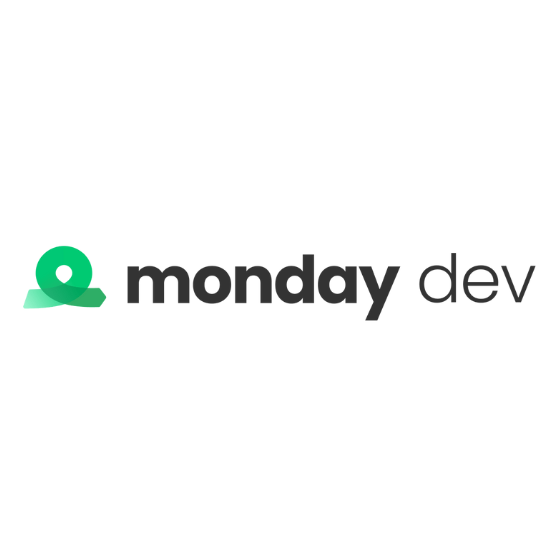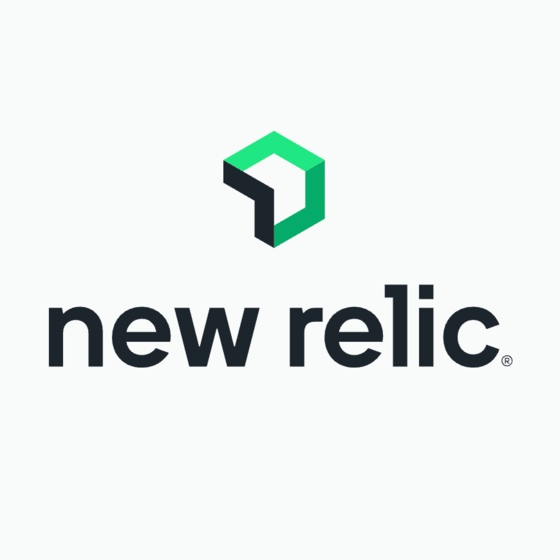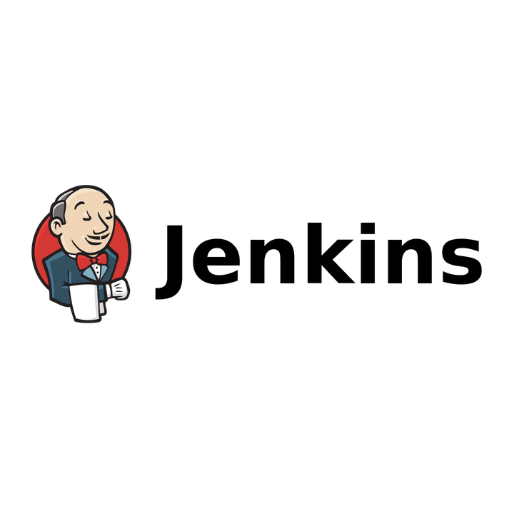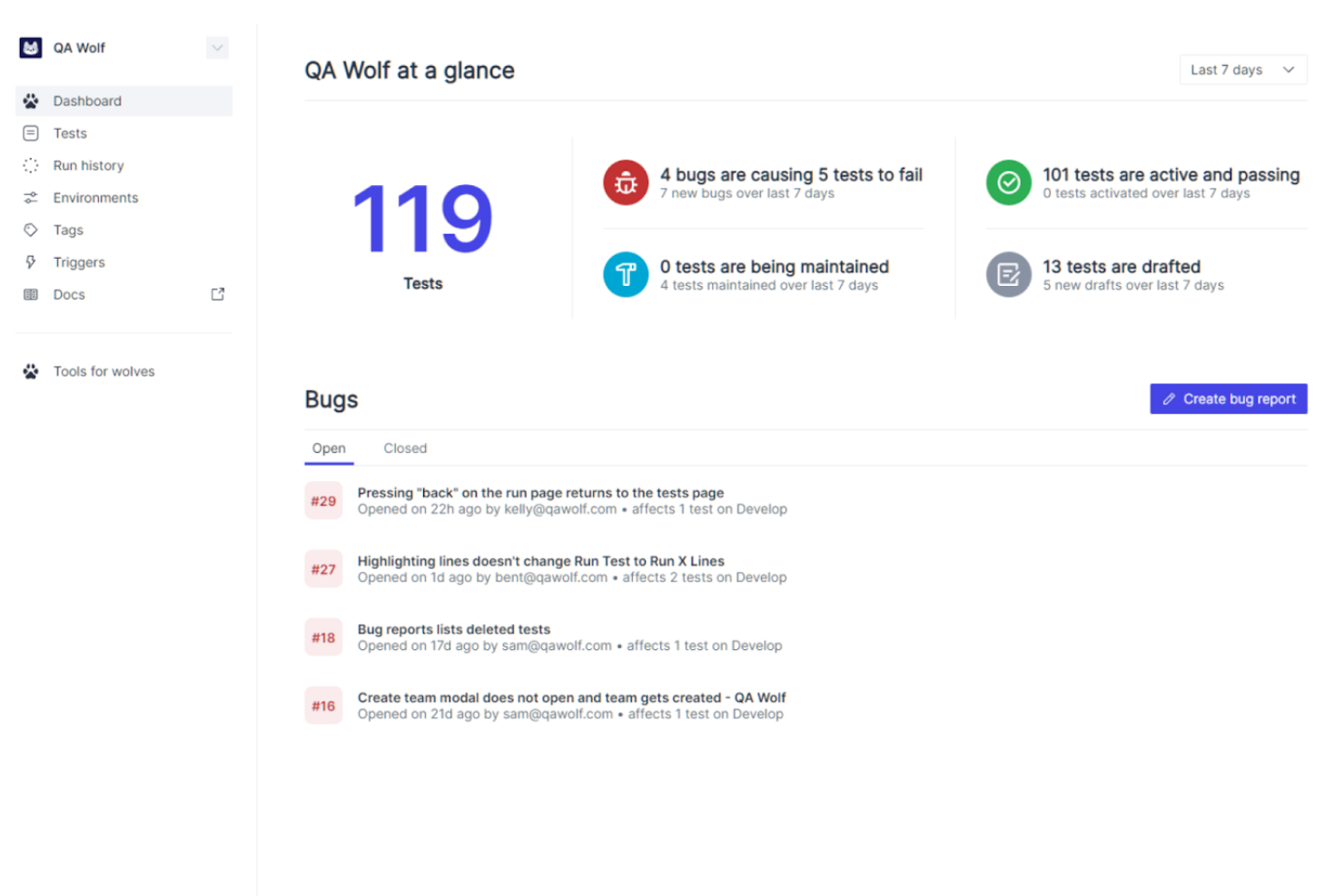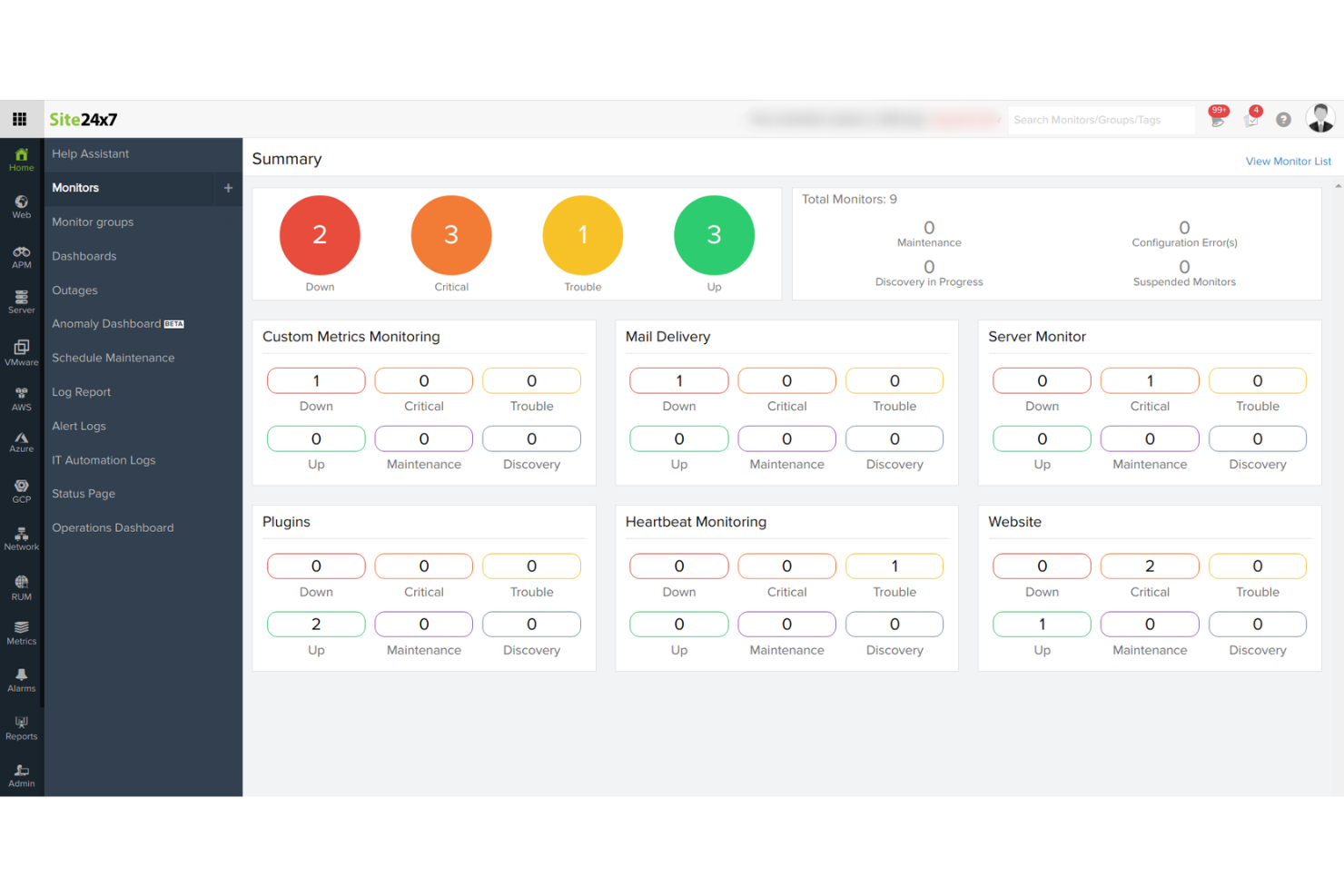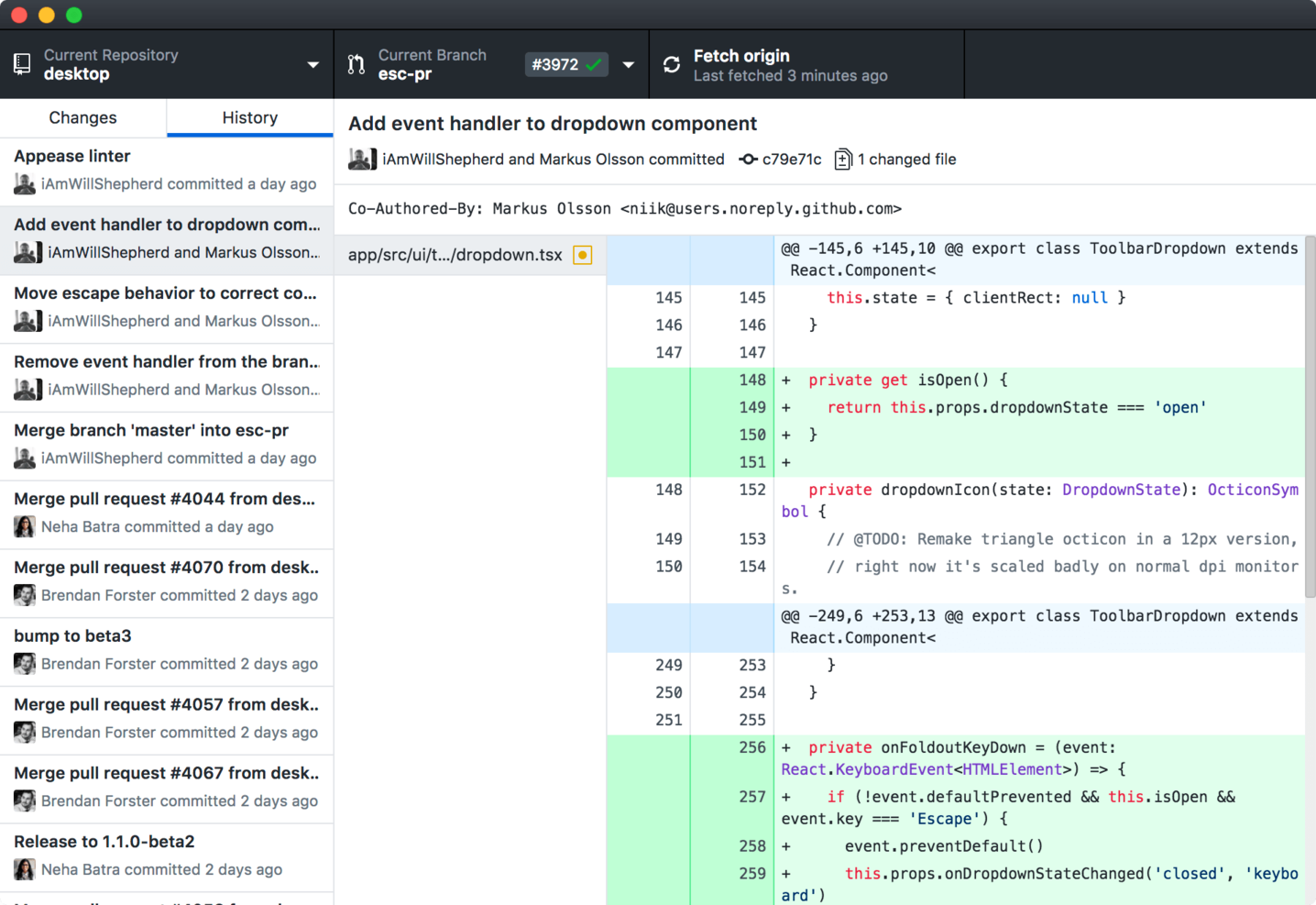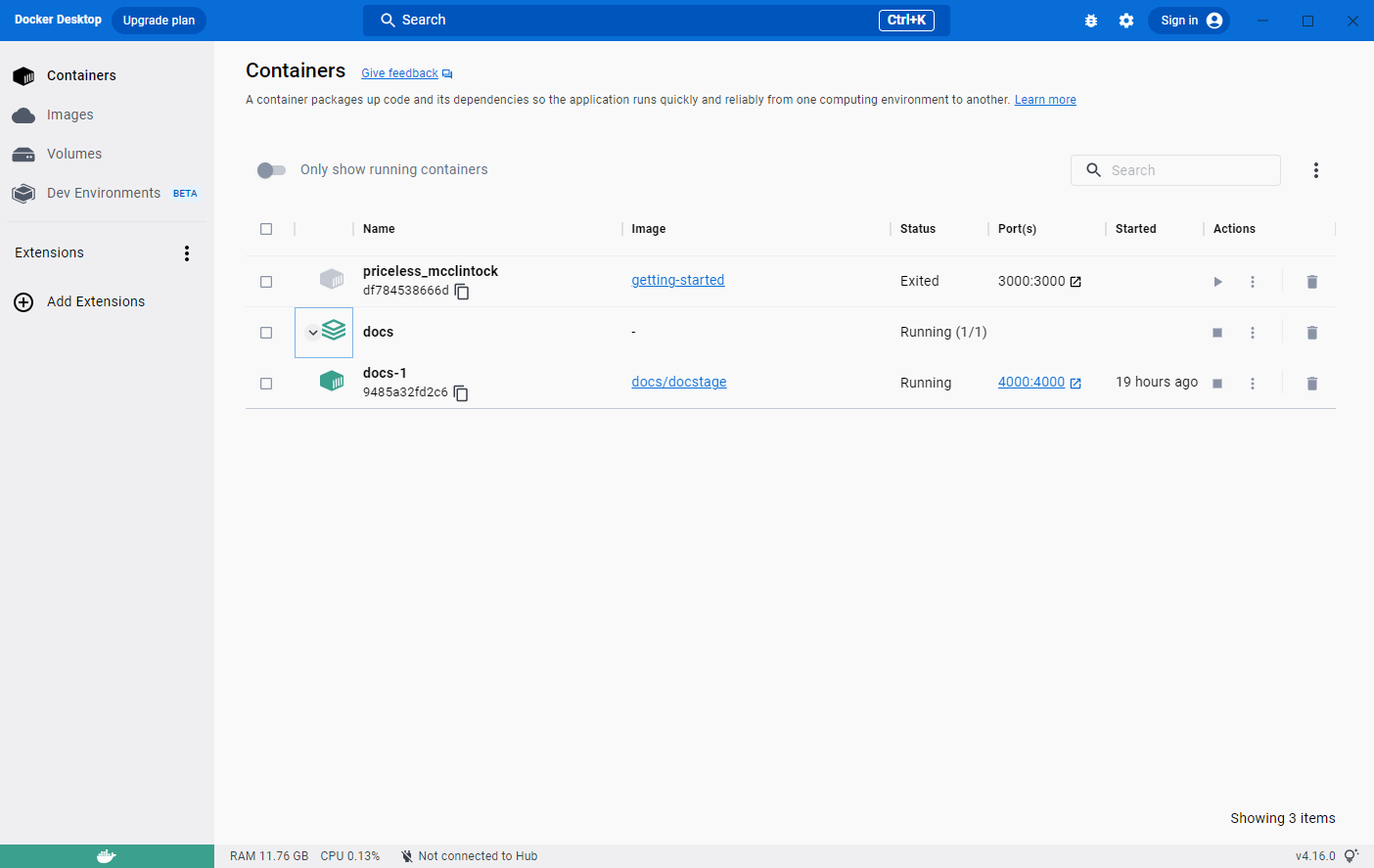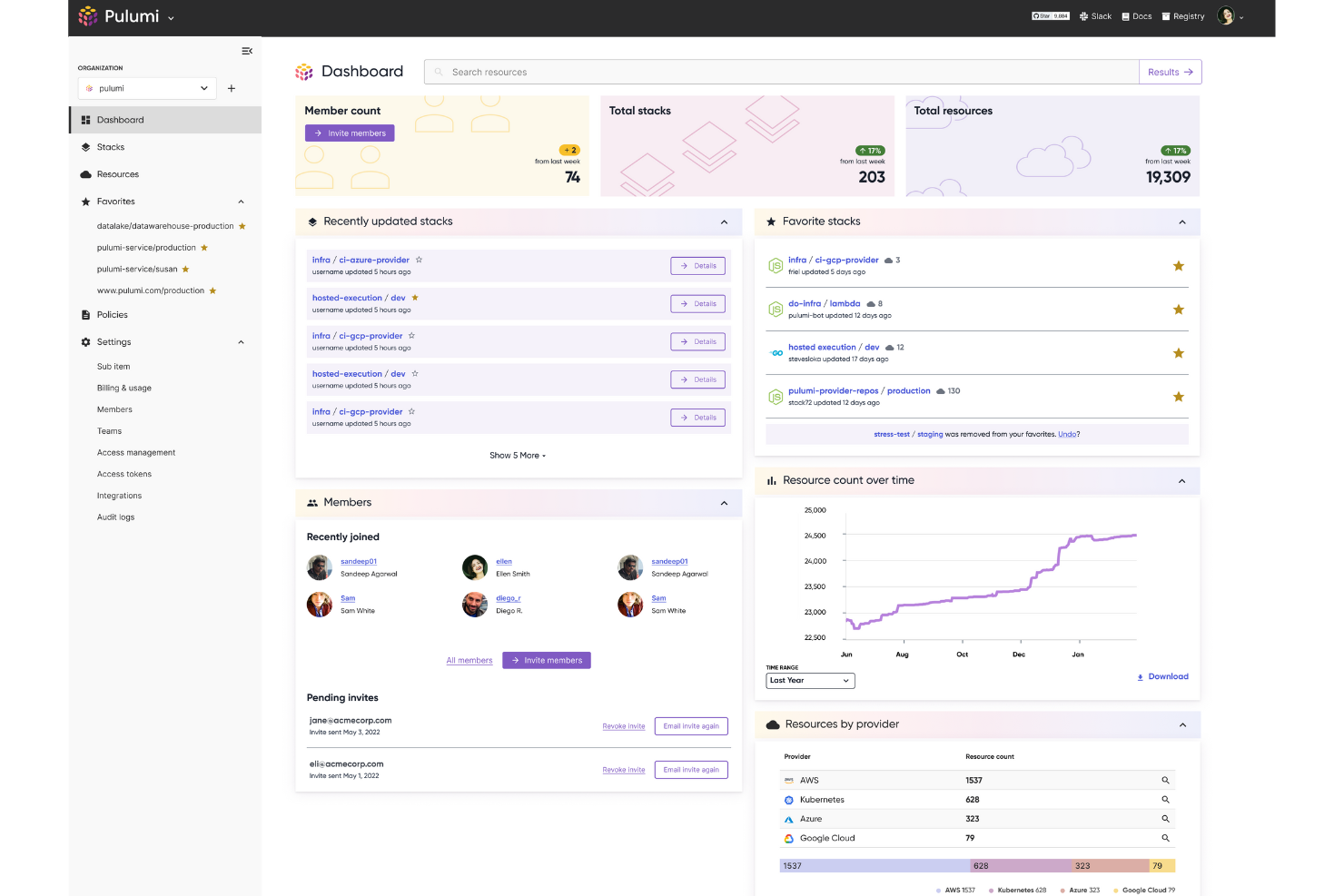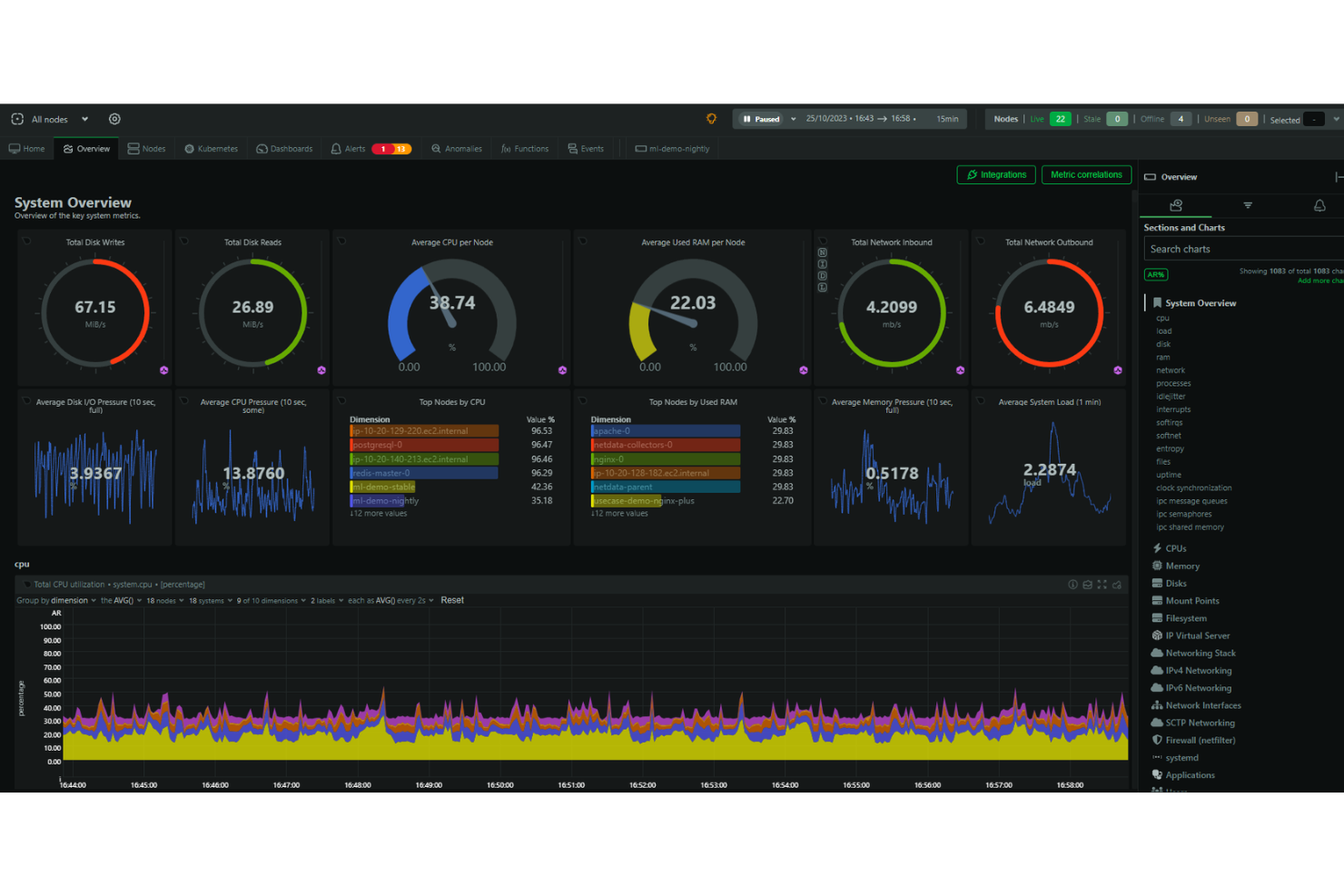Best DevOps Tools Shortlist
Here is a quick list of my favorite tools. I’ve also included a detailed breakdown for each tool below.
Our one-on-one guidance will help you find the perfect fit.
DevOps tools help teams automate workflows, manage infrastructure, and keep software delivery consistent from development through deployment.
Many teams explore these tools when release cycles take too long, manual steps keep breaking things, or disconnected systems make it hard to track what’s really happening in production. These problems slow progress and make it harder to build confidence in each release.
I've worked directly with engineers and operations teams to evaluate platforms based on how well they support real-world pipelines and collaboration. This guide draws from that experience and focuses on tools that simplify work, improve coordination, and help teams ship with fewer blockers.
Why Trust Our DevOps Tools Reviews
We’ve been testing and reviewing DevOps tools since 2023. As developers ourselves, we know how critical and difficult it is to make the right decision when selecting software.
We invest in deep research to help our audience make better software purchasing decisions. We’ve tested more than 2,000 tools for different software development use cases and written over 1,000 comprehensive software reviews. Learn how we stay transparent & our hybrid cloud solution review methodology.
Best New DevOps Tools Summary
| Tool | Best For | Trial Info | Price | ||
|---|---|---|---|---|---|
| 1 | Best for DevOps sprint management | Free trial available | From $8/user/month | Website | |
| 2 | Best for end-to-end testing with expert support | Free demo available | Pricing upon request | Website | |
| 3 | Best for real user monitoring | Free trial + demo available | Pricing upon request | Website | |
| 4 | Best for DevOps monitoring | 30-day free trial + demo available | From $395/year (billed annually) | Website | |
| 5 | Best for DevOps collaboration | 30-day free trial available | From $4/user/month | Website | |
| 6 | Best for faster software delivery cycles | Free plan available | From $9/user/month (billed annually) | Website | |
| 7 | Best for AI-driven infrastructure insights | 14-day free trial | From $0.37/resource/month | Website | |
| 8 | Best for real-time infrastructure monitoring | Free trial + demo available | From $4.50/node/month (billed annually) | Website | |
| 9 | Best for application performance monitoring | Free plan + demo available | Pricing upon request | Website | |
| 10 | Best for cloud security management | Free trial available | From $59/node/month (billed annually) | Website | |
| 11 | Best for flexible deployments | Free demo available | Free to use | Website | |
| 12 | Best for AWS configurations | Free plan available | Pricing upon request | Website |
-

Docker
Visit WebsiteThis is an aggregated rating for this tool including ratings from Crozdesk users and ratings from other sites.4.6 -

Pulumi
Visit WebsiteThis is an aggregated rating for this tool including ratings from Crozdesk users and ratings from other sites.4.8 -

GitHub Actions
Visit Website
Best DevOps Tools Reviews
From scalability to simplicity, there’s something for everyone on this list of DevOps tools:
monday dev is a platform tailored for agile and DevOps teams to manage the entire development lifecycle. It offers tools for planning, tracking, and automating workflows to enhance team collaboration.
Why I picked monday dev: monday dev’s sprint management feature provides a structured approach to plan, execute, and review sprints, ensuring all stages of development are accounted for. The burndown chart allows you to monitor progress and identify potential roadblocks early by comparing actual effort with planned progress. Additionally, its automation capabilities let you create custom workflows to reduce repetitive tasks, ensuring your team focuses on higher-value work.
monday dev Standout Features and Integrations:
Features include a dedicated space for knowledge management through its documentation tools, allowing teams to centralize information like release notes and best practices. The incident tracking system helps teams log and resolve issues efficiently, minimizing downtime. Furthermore, it provides multiple visualization options like Kanban boards and Gantt charts to track progress and adjust plans in real time.
Integrations include Slack, Microsoft Teams, GitHub, GitLab, Jira, Figma, Outlook, Gmail, Zoom, Google Calendar, Zendesk, and Google Drive.
Pros and cons
Pros:
- Comprehensive sprint planning tools
- Real-time Git integration
- Multiple work visualization options
Cons:
- Limited flexibility in reporting views
- Requires setup time for automations
QA Wolf is a hybrid test automation platform that offers round-the-clock expert support for monitoring and maintaining a wide range of tests for web and mobile applications, making it ideal for DevOps teams looking for a more efficient process
Why I picked QA Wolf: As a DevOps tool, QA Wolf focuses on various aspects of application testing, such as performance testing, regression testing, and accessibility testing. These tailored automated tests are designed and maintained by QA Wolf's experts, offering 24-hour support for DevOps teams. QA Wolf integrates into CI/CD pipelines, allowing for continuous testing and immediate feedback on code changes. The platform also offers parallel testing features for multiple tests to run at the same time.
QA Wolf Standout Features and Integrations:
Features include the automation of thousands of tests using open-source Playwright code, unlimited parallel runs for efficiency, 24-hour maintenance and on-demand test creation, detailed test reports, and the ability to record and replay tests.
Integrations include Jenkins, Jira, Asana, Linear, Slack, Microsoft Teams, GitHub, GitLab, Bitbucket, Azure DevOps, Travis CI, and CircleCI.
Pros and cons
Pros:
- Easy communication with the QA Wolf team
- 24-hour test maintenance
- All bugs are human-verified
Cons:
- Less flexibility to customize your own tests
- Reliance on external QA team may lead to coordination issues
Site24x7 is a cloud-based monitoring solution designed for DevOps and IT operations teams. It offers comprehensive monitoring capabilities for websites, servers, applications, and network infrastructure, providing real-time insights into performance and availability.
Why I picked Site24x7: I like its application performance monitoring (APM) capabilities. It supports various programming languages and frameworks, including Java, .NET, Ruby, PHP, Node.js, and mobile platforms. This allows your team to monitor application performance in real-time, identify bottlenecks, and perform root cause analysis down to the line of code. It also offers real user monitoring (RUM), allowing you to gauge the experience of actual users on your websites and web applications through segmented metrics, like browser, platform, geography, and ISP.
Site24x7 Standout Features and Integrations:
Features include synthetic web transaction monitoring, which allows you to record and simulate multi-step user interactions in a real browser to optimize critical user paths like login forms and shopping carts. Additionally, Site24x7 offers network monitoring to comprehensively oversee critical network devices such as routers, switches, and firewalls, providing the visibility needed to manage complex networks effectively.
Integrations include ServiceNow, PagerDuty, Jira, Microsoft Teams, Slack, Nagios, AWS, Azure, Google Cloud Platform, Docker, Jenkins, and Kubernetes.
Pros and cons
Pros:
- Offers real-time alerts across various channels
- Customizable dashboards and reports
- Comprehensive monitoring for various systems
Cons:
- Limited customization in alerting mechanisms
- Complexity in initial setup for large environments
New Product Updates from Site24x7
Amazon CloudWatch Logs Integration
Site24x7 integrates with Amazon CloudWatch Logs, offering centralized log analytics, real-time alerts, and metric correlation. Monitor log groups and gain region-level insights within Site24x7. More details at Site24x7 What's New.
ManageEngine Applications Manager is a comprehensive tool designed for real-time issue detection and monitoring of applications, offering a wide range of features to help businesses effectively manage their applications and ensure optimal performance. Its unique selling point lies in its ability to provide real-time issue detection, allowing users to proactively troubleshoot and address performance anomalies before they affect the overall performance of their business applications.
Why I Picked ManageEngine Applications Manager: ManageEngine Applications Manager excels by offering a unified platform for monitoring and managing the performance of applications across various environments. It facilitates continuous monitoring, which is critical for the DevOps practice of continuous integration and continuous delivery (CI/CD). With its ability to provide actionable insights and automate routine tasks, it helps DevOps teams reduce downtime, improve deployment frequency, and ensure a seamless end-user experience.
Standout Features and Integrations
Features include its ability to automatically discover and map the dependencies of various applications and servers within an IT ecosystem. This feature provides IT administrators with a visual map of how different applications and servers interact with each other, making it easier to understand the complex relationships and dependencies within their IT infrastructure. Additional features include application performance monitoring, real-time analytics, cloud and on-premises monitoring, automated workflows, customizable dashboards, root cause analysis, synthetic transaction monitoring, server and database monitoring, application dependency mapping, and alert management.
Integrations include Amazon Web Services (AWS), Microsoft Azure, Oracle Database, Microsoft SQL Server, VMware, Docker, Apache Tomcat, SAP, Office 365, and Slack.
Pros and cons
Pros:
- Extensive support for cloud and on-premises environments, facilitating hybrid monitoring
- Customizable alerts and thresholds for proactive incident management
- Comprehensive monitoring capabilities across applications, servers, and databases
Cons:
- Learning curve for users new to application performance management tools
- Complexity in initial setup and configuration for some integrations
GitHub is a cloud-based service that allows developers to manage their code repositories and collaborate remotely with their team. It also integrates with various DevOps tools.
Why I picked GitHub: Distributed workforces can make collaboration challenging, which is why I chose GitHub as one of the top DevOps tools. Its distributed version control system (DVCS) replicates code repositories and tracks individual changes for each user. This means users can work independently and merge their changes later, regardless of their location.
GitHub Standout Features and Integrations:
Features that I think make GitHub a great tool for DevOps teams include GitHub Actions—a tool that allows you to build, test, and deploy applications from your GitHub repository. You can create your own actions or access pre-built workflows from the GitHub Marketplace. Another standout feature is GitHub Issues, which allows you to visualize projects as boards or tables and assign tasks to different users.
Integrations are pre-built for various platforms like CodeFactor, Azure Pipelines, Codacy, Jira, Argos CI, Slack, and DevHub.
Pros and cons
Pros:
- Provides collaboration tools to share and co-edit code
- Offers Android and iOS mobile apps
- Supports both on-premise and cloud deployments
Cons:
- Steep learning curve for beginners
- Can be expensive for large development teams
Docker is an open-source containerization platform that allows developers to package and deploy applications in isolated environments called containers.
Why I picked Docker: I put Docker on this list because containers are a game-changer for streamlining DevOps and Docker is arguably the best platform for developing containerized apps. Instead of setting up multiple virtual machines, you can use Docker to create a single container configuration that runs the same way atop any infrastructure, whether on-premise or in the cloud. The portable nature of Docker containers means you can quickly deploy applications to your production environments.
Docker Standout Features and Integrations:
Features that make me recommend Docker to DevOps teams include its scalability. Docker’s ability to spin up multiple instances of a container means that developers can scale their applications up or down based on workloads. Docker also supports version control, so you can roll a container image back to a previous version if necessary.
Integrations are available natively with integrated development environment (IDE) tools like Visual Studio Code, IntelliJ IDEA, and GitPod. Other native integrations include GitHub Actions, GitLab, CircleCI, and Render.
Pros and cons
Pros:
- Has a large and active community of developers
- Makes it easy to scale applications based on demand
- Containers are more lightweight and portable than virtual machines
Cons:
- Can be difficult to configure compared to traditional deployments
- Steep learning curve for developers unfamiliar with containerization
Pulumi helps businesses automate any cloud infrastructure through code, handle secrets sprawl and configuration complexity through secrets management and orchestration, and manage cloud assets and compliance with the help of AI. Pulumi encourages infrastructure, platform, development, DevOps, and security teams to collaborate, accelerating time to market with greater control and minimized risk.
Why I picked Pulumi: I like that it offers insights, that use AI-driven infrastructure management to help your team monitor and improve cloud resources. It's not just about tracking what's going on; it's about getting actionable insights that lead to better decisions and quicker problem-solving. Pulumi supports multiple programming languages like Node.js, Python, Go, .NET, Java, and YAML. This flexibility means you can stick with the languages you're already comfortable with, speeding up deployment and reducing the learning curve, especially if you're moving from other tools.
Pulumi Standout Features and Integrations:
Features include the Pulumi Copilot which supports intelligent cloud management by providing guidance and assistance in managing your cloud infrastructure efficiently. Additionally, Pulumi CrossGuard emphasizes security and compliance, ensuring secure configuration and secrets management across your cloud infrastructure.
Integrations include AWS, Azure, Google Cloud, Kubernetes, Docker, GitHub, GitLab, Datadog, MongoDB, PostgreSQL, Terraform, and Vault.
Pros and cons
Pros:
- Enables real-time updates and previews of changes
- Offers significant control over infrastructure
- Allows use of familiar programming languages
Cons:
- Potential performance issues when working on larger projects
- Advanced features may be overwhelming for beginners
Netdata is an open-source observability, monitoring, and troubleshooting platform that offers high-resolution metrics, journal logs, and real-time visualizations for infrastructure monitoring. Its unique selling point lies in its ability to provide high-fidelity data for troubleshooting emerging issues in real-time.
Why I Picked Netdata: I chose Netdata because of its comprehensive real-time monitoring capabilities, which are supported by high-resolution metrics and real-time visualizations. Its open-source nature and minimal resource usage make it a compelling choice for infrastructure monitoring. Netdata stands out due to its user-friendly interface, which simplifies IT operations, and its support from the Cloud Native Computing Foundation, which underscores its reliability and scalability.
Netdata Standout Features & Integrations
Features include alerts to notify users of any issues detected within the system, automatic anomaly detection, and automated and customizable dashboards. Additionally, the core of the Netdata ecosystem is open-source, and it includes all the monitoring features such as the database, query engine, scoring engine, health engine, and machine learning engine.
Integrations include Containers, Kubernetes Containers, Virtual Machines, Apache, Consul, Elasticsearch, OpenSearch, MySQL, Redis, Squid log files, Windows, macOS, and hundreds more.
Pros and cons
Pros:
- Interactive graphs for data visualization
- Unlimited metric monitoring
- Automated alerts
Cons:
- May come with a learning curve to maximize its features
- Insights could be more comprehensive
New Relic is a real-time application performance monitoring (APM) tool that helps developers identify and resolve issues in their infrastructure.
Why I picked New Relic: I should point out that New Relic is primarily an infrastructure monitoring tool. However, I included it in this list because DevOps teams can use it to monitor the performance of their applications in real time. The insights the platform delivers can help you improve software performance and deliver better customer experiences.
New Relic Standout Features and Integrations:
Features that make New Relic stand out as a monitoring tool include its error-tracking capabilities; development teams can monitor errors in a single view and get all the details they need to identify root causes. Comparing code changes with historical data can help you assess your code’s impact on performance. I also like that its integration with Slack facilitates collaboration and enables teams to resolve issues before they affect end users.
Integrations are available natively for over 600 platforms and services. Notable integrations include Amazon ECS, CentOS, Elasticsearch, Kafka, MariaDB, MySQL, PostgreSQL, and Redis.
Pros and cons
Pros:
- Offers a fully customizable dashboard
- Helps teams identify optimization improvements in their software
- Provides insights into the performance of your applications
Cons:
- Lack of comprehensive documentation for advanced features
- Overwhelming interface
Chef Automate is a DevOps platform that enables organizations to automate the process of managing, deploying, and securing their cloud infrastructure.
Why I picked Chef: I picked Chef for its robust cloud security management, which enforces compliance with industry best practices to protect your infrastructure. It works for on-premise and public cloud environments, as well as container and Kubernetes deployments.
Chef Standout Features and Integrations: asdf
Features that I think make Chef stand out include its IAC scanning tools that automatically scan your infrastructure for security vulnerabilities or misconfigurations. If your company operates in an industry with strict regulatory standards, using Chef can help ensure compliance. It can also automatically reconfigure IT resources at scale before they go into production.
Integrations are available natively for cloud platforms like AWS, GCP, and Azure. You can also use Chef’s native integration with ServiceNow to automate your IT operations and Terraform to provision infrastructure for the cloud.
Pros and cons
Pros:
- Provides comprehensive product documentation
- Offers excellent customer support if any issues arise
- Ensures that deployed systems comply with security standards
Cons:
- Visit WebsiteOpens new window
- Complex setup depending on your infrastructure
- Has limited integrations with other tools
Jenkins is an open-source Java-based automation server that facilitates the continuous integration and continuous delivery (CI/CD) process.
Why I picked Jenkins: I chose Jenkins for its flexibility. It offers thousands of community-built plugins, which you can customize the platform to fit a massive range of use cases. And because it was developed as a self-contained Java program, it can run on most operating systems.
Jenkins Standout Features and Integrations:
One feature I like about Jenkins is it allows you to distribute builds across multiple environments, which makes testing and deploying code more efficient. I also like that the platform is open-source and backed by a large community of developers.
Integrations include over 1,800+ pre-built plugins. These include Git and Subversion for version control, Apache Maven and Gradle for build tools, and JUnit and Cucumber for testing.
Pros and cons
Pros:
- Open-source flexibility
- Provides community support
- Offers an extensive plugin ecosystem
Cons:
- Requires extensive ongoing maintenance
- Notable learning curve for configuration and setup
AWS CloudFormation is an infrastructure automation platform that allows developers to manage and deploy resources in AWS using template text files.
Why I picked AWS CloudFormation: I put AWS CloudFormation on this list because you can use it to automate the deployment and configuration of practically any AWS service, like Elastic Compute Cloud (EC2), Simple Storage Service (S3), and Identity and Access Management (IAM) roles. By automating the deployment of your AWS resources, you can reduce time-consuming tasks and the risk of manual errors.
AWS CloudFormation Standout Features and Integrations:
Features that make AWS CloudFormation worth learning, in my opinion, include its deployment speed. With a JSON or YAML text template, you can instantly provision multiple AWS resources in one go. Of course, you’ll have to spend time setting up a template, but I found it far more efficient than manually setting up deployments using the AWS Command Line Interface (CLI).
Integrations Native integrations are available for dozens of tools, including network scanning solutions such as Faddom and Autobahn network scanning, AI monitoring tool Mona, and no-code development platforms like AppMater and Neptune DXP.
Pros and cons
Pros:
- Works with AWS and third-party resources
- Lets you model your cloud environment with text files like JSON or YAML
- Offers a range of sample templates to provision your AWS resources
Cons:
- May not be suitable for more complex deployments
- Initial learning curve to configuring AWS CloudFormation
Other DevOps Tools
Still looking? Here are a few more notable DevOps tools to choose from:
- TeamCity
For CI/CD pipeline optimization
- Atlassian Open DevOps
For customization and flexibility
- Terraform
For complex environments
- Kubernetes
For container orchestration
- Puppet
For multiple server management
- Ansible
For automating IT tasks
- Tggl
For safe and fast code releases
- Nagios
For infrastructure monitoring
- SysAid
For IT service automation
- Sentry
For error tracking
Related Software & Tool Reviews
If you still haven't found what you're looking for here, check out these other types of tools that we've tested and evaluated.
- Network Monitoring Software
- Server Monitoring Software
- SD-Wan Solutions
- Infrastructure Monitoring Tools
- Packet Sniffer
- Application Monitoring Tools
DevOps Lifecycle
The DevOps lifecycle is a continuous process that aims to streamline software development and IT operations, promoting faster, more reliable releases through collaboration, automation, and monitoring.
Each phase of the DevOps lifecycle is interconnected, ensuring that development, deployment, and operations function seamlessly. Understanding these phases and implementing the right tools and practices for each one is crucial to maximizing the benefits of a DevOps approach.
- Planning: The first step in any successful DevOps lifecycle is meticulous planning. This phase involves defining project goals, requirements, and timelines while fostering collaboration between developers, operations teams, and other stakeholders. Tools like Jira and Trello are widely used for task management and collaboration, helping teams organize and prioritize tasks. Confluence or Notion can also be useful for maintaining project documentation, while Git allows for proper version control.
- Building: Once planning is complete, the focus shifts to coding and building the application. During this phase, developers write and commit code, often leveraging version control systems like Git or GitLab to track changes and collaborate efficiently. For continuous integration (CI), tools like Jenkins, CircleCI, and Travis CI automate the building and integration of code, ensuring that new commits don’t break the application. These tools are essential for automating builds, identifying issues early, and maintaining high-quality code.
- Testing: Automated testing is central to the DevOps lifecycle, ensuring that code changes are vetted before moving into production. Testing tools like Selenium, JUnit, and TestNG enable teams to perform unit, functional, and integration testing, allowing for a comprehensive assessment of new code. For continuous testing, tools like SonarQube help analyze code quality and ensure security, while Katalon supports automated UI testing across different browsers.
- Deploying: The deployment phase involves the release of new code into production environments. Continuous delivery (CD) tools like Spinnaker, Ansible, and Kubernetes play a pivotal role here, automating deployments and managing containers. With Docker for containerization and Kubernetes for orchestration, teams can ensure consistent deployment across different environments. Infrastructure as code (IaC) tools like Terraform and AWS CloudFormation are also critical, allowing for automated infrastructure provisioning and management.
- Operating: After deployment, the focus shifts to maintaining the application's health and ensuring it runs efficiently in the live environment. Tools like Prometheus, Nagios, and Datadog are essential for monitoring infrastructure performance and ensuring uptime. ELK Stack (Elasticsearch, Logstash, and Kibana) and Splunk assist with log management and analysis, helping teams quickly diagnose and resolve operational issues.
- Observing: Monitoring and observing the application's performance post-deployment is crucial for identifying issues and maintaining operational stability. Tools like Grafana and New Relic offer real-time metrics and alerting systems, allowing teams to monitor the health of the application and underlying infrastructure. Continuous observation ensures quick incident response times and provides valuable data for future optimization.
- Continuous Feedback: Finally, DevOps thrives on continuous feedback, which informs the planning and improvement of future cycles. Organizations can refine the application and processes over time by incorporating feedback from end-users, development teams, and operations. Tools like Slack, Microsoft Teams, and Zendesk facilitate team communication. At the same time, customer feedback platforms such as SurveyMonkey and UserVoice ensure that user insights are looped back into the product development cycle.
By leveraging the right tools and following these DevOps lifecycle phases, organizations can ensure a streamlined development process that balances speed, security, and stability. For enhanced security integration, consider exploring comprehensive DevSecOps tools. Each stage plays a critical role in maintaining the iterative and responsive nature of DevOps, ultimately driving better outcomes for software development and delivery.
Selection Criteria for DevOps Tools
Selecting the right tools is a pivotal decision that directly impacts the efficiency and effectiveness of software development, deployment, and maintenance processes. These tools must not only address specific use cases but also align with the unique needs and pain points of your business. Based on my experience and research into these tools, I've developed the following criteria to guide my evaluations:
Core Functionality: 25% of total weighting score
To be considered for inclusion on my list of the best DevOps tools, the solution had to fulfill common use cases. These include:
- Automating the software deployment process
- Managing and collaborating on code changes
- Ensuring application reliability and performance
- Securing application and infrastructure from vulnerabilities
- Scaling infrastructure to meet demand
Additional Standout Features: 25% of total weighting score
- Innovative CI/CD approaches: Tools that introduce new methods for automating deployments, such as predictive deployment analysis.
- Advanced security features: Solutions that incorporate cutting-edge security practices directly into the DevOps pipeline.
- Enhanced collaboration tools: Platforms that offer unique ways for teams to collaborate and communicate more effectively on development and operational tasks.
- Next-gen monitoring and analytics: Tools that leverage AI and machine learning for predictive analytics and advanced monitoring.
- Cloud-native advancements: Solutions specifically designed to optimize the benefits of cloud computing environments, going beyond basic compatibility.
Usability: 10% of total weighting score
- Interfaces that are intuitive and easy to navigate, facilitating a seamless workflow.
- Customization options that allow users to tailor the tool to their specific workflow needs.
- Clear visualization of pipelines and processes, enabling users to quickly understand the status of deployments and operations.
Onboarding: 10% of total weighting score
- Comprehensive training materials, such as video tutorials and documentation, that allow new users to quickly get up to speed.
- Interactive product tours and guides that offer a hands-on approach to learning the tool's features.
- Support channels like chatbots and dedicated customer success teams to assist with initial setup and integration.
Customer Support: 10% of total weighting score
- Responsive and knowledgeable support teams available through multiple channels (e.g., live chat, email, phone).
- Community forums or user groups that provide peer support and best practices sharing.
- Regular updates and clear communication from the provider regarding new features and improvements.
Value For Money: 10% of total weighting score
- Pricing structures that are transparent and offer flexibility based on the size and needs of the team.
- Free trials or demos that allow teams to assess the tool's value before committing.
- Comparison of features versus cost against competitors to ensure buyers receive the best return on investment.
Customer Reviews: 10% of total weighting score
- Positive feedback on user experience and the tool's impact on improving DevOps processes.
- Case studies or testimonials that highlight real-world success stories and outcomes.
- Consistent praise for specific features or aspects of the tool that demonstrate its effectiveness and efficiency.
Evaluating DevOps tools through this lens ensures that my recommendations consider how well they meet the nuanced needs of different software development environments. This approach ensures that the tools selected not only streamline the DevOps processes but also align with the strategic goals of software buyers.
How to Choose a Top DevOps Tool
As you're shortlisting, trialing, and selecting DevOps tools, consider the following:
- What problem are you trying to solve - Start by identifying the DevOps feature gap you're trying to fill to clarify the features and functionality the tool needs to provide.
- Who will need to use it - To evaluate cost and requirements, consider who'll be using the platform and how many licenses you'll need. You'll need to evaluate if it'll just be the DevOps team, or the whole organization that will require access. When that's clear, it's worth considering if you're prioritizing ease of use for all, or speed for your technical power users.
- What other tools it needs to work with - Clarify what tools you're replacing, what tools are staying, and the tools you'll need to integrate with. This could include your existing DevOps infrastructure, SCM tools, and your overall tech stack. You might also need to decide if the tools will need to integrate together, or alternatively, if you can replace multiple tools with one consolidated DevOps tool.
- What outcomes are important - Consider the result that the tool needs to deliver to be considered a success. Think about what capability you want to gain, or what you want to improve, and how you will be measuring success. You could compare DevOps tool features until you’re blue in the face, but if you aren’t thinking about the outcomes you want to drive, you could be wasting a lot of valuable time.
- How it would work within your organization - Consider the solutions alongside your workflows and delivery methodology. Evaluate what's working well, and the areas that are causing issues that need to be addressed. Remember every business is different — don’t assume that because a tool is popular that it'll work in your organization.
Trends in DevOps Tools for 2025
DevOps tools and technologies will continue to evolve, driven by the relentless demand for more efficient, scalable, and secure software delivery processes. An examination of product updates, press releases, and release logs from leading DevOps tools reveals clear trends in the technologies and features that are shaping the future of software development, deployment, and maintenance.
Here's a summary of the trends I'm seeing in the space:
- Rise of Security-Centric DevOps (DevSecOps): Security features are rapidly evolving within DevOps tools, with a significant shift towards embedding security at every stage of the software development lifecycle. This approach, known as DevSecOps, emphasizes the importance of security assessments, vulnerability scanning, and compliance checks as integral, automated parts of the CI/CD pipeline.
- Cloud-Native and Kubernetes-First Strategies: There's a noticeable trend towards tools that offer enhanced support for cloud-native applications and Kubernetes orchestration. This includes functionalities for managing containerized applications at scale, optimizing for AWS DevOps tools, and ensuring seamless deployment across different cloud platforms.
- Simplification and Streamlining of CI/CD Pipelines: Tools are focusing on making CI/CD pipelines more intuitive and easier to manage, with visual programming interfaces, simplified pipeline configuration, and enhanced debugging capabilities. This trend caters to the need for DevOps teams to quickly adapt and respond to changing requirements without sacrificing quality or efficiency.
- Automated Code Remediation: Some tools are introducing automated code remediation features, which not only identify code vulnerabilities but also suggest or implement fixes automatically. This advanced feature is novel in its approach to reducing the manual workload on developers and ensuring higher security standards.
Features Becoming Less Important
- Manual Configuration and Setup: As automation and AI take center stage, features that require extensive manual configuration and setup are becoming less important. DevOps teams are seeking tools that offer quick setup, pre-configured templates, and intelligent automation to reduce manual intervention.
The trends in DevOps tools and technologies for 2025 underscore a shift towards more intelligent, secure, and efficient software development and deployment processes. As these new functionalities take shape, DevOps professionals can navigate the complexities of modern software development with greater ease and effectiveness. Keeping up with these trends will help you stay one step ahead in the DevOps lifecycle tools you need to do your best work.
What are DevOps Tools?
DevOps tools are software that helps teams build, test, deploy, and manage applications faster and more reliably. They're mostly used by developers, IT operations teams, and site reliability engineers to speed up delivery and reduce mistakes. Automation, infrastructure as code, and deployment monitoring help with keeping workflows consistent, cutting down manual steps, and spotting issues early. These tools make it easier for teams to work together and ship code with more confidence.
Features of DevOps Tools
Here, I'll explore the most important features that I look for in DevOps tools during my research and selection process:
- Continuous Integration/Continuous Deployment (CI/CD) Capabilities: This feature automates the software release process. It allows developers to integrate code into a shared repository early and often, and then deploy it automatically, ensuring that new changes are always ready for deployment.
- Version Control Integration: This enables seamless tracking of changes. Integrating with version control systems like Git allows teams to manage code changes and history, ensuring that everyone can collaborate efficiently and revert back to previous states if needed.
- Automated Testing Support: This feature supports the automation of testing processes. Automated tests run as part of the CI/CD pipeline to ensure that code changes do not break existing functionality, thus maintaining the integrity of the software.
- Configuration Management: This allows for the automation of infrastructure provisioning and management. Configuration management tools ensure that systems are provisioned and maintained in a desired, predictable state, which is crucial for scaling and managing infrastructure efficiently.
- Container Orchestration Support: This provides management of containers at scale. With container orchestration, you can automate the deployment, scaling, and management of containerized applications, making it easier to manage lifecycle issues of containers.
- Monitoring and Logging: This feature provides insights into applications and infrastructure. Effective monitoring and logging tools are essential for identifying and addressing issues in real-time, ensuring high availability and performance of applications.
- Collaboration and Communication Tools: This enhances team collaboration. Tools that facilitate effective communication and collaboration among team members are essential for coordinating work across the DevOps lifecycle, from development to operations.
- Security Integration (DevSecOps): This integrates security into the DevOps process. Incorporating security tools and practices from the start of the CI/CD pipeline ensures that applications are secure by design, reducing the risk of vulnerabilities.
- Cloud-Native Compatibility: This ensures tools work well in cloud environments. Cloud-native tools are designed to leverage the scalability, resilience, and flexibility of cloud computing environments, enabling more efficient development, deployment, and scaling of applications.
- Scalability and Performance: This feature ensures tools can grow with your needs. Tools must be able to scale and perform under increasing loads, ensuring that they can support the growth of your applications and infrastructure without becoming a bottleneck.
By focusing on the features most important to your business, you'll be able to pinpoint tools that offer a robust solution for your needs. This will help your team build and maintain systems at scale, respond to market needs more quickly, and ensure that your development practices are as efficient and effective as possible.
Benefits of DevOps Tools
DevOps tools stand at the forefront of transforming the software development and deployment landscape, offering a suite of benefits that streamline processes, enhance efficiency, and foster innovation within teams and organizations. Here are five primary benefits that DevOps tools provide, each playing a pivotal role in optimizing software lifecycle management from conception to delivery.
- Increased Deployment Speed: DevOps tools automate the CI/CD pipeline, significantly reducing the time required to deploy new versions of software. This acceleration enables businesses to respond more rapidly to market changes and customer needs, maintaining a competitive edge.
- Enhanced Collaboration and Communication: By integrating various aspects of development, operations, and quality assurance, DevOps tools break down silos and promote a culture of transparency and cooperation. This environment not only improves team morale but also leads to more innovative solutions and faster problem resolution.
- Improved Reliability and Quality of Software: Automated testing and continuous integration features ensure that code is rigorously tested and bugs are caught early in the development cycle. This relentless focus on quality results in more reliable software releases and a better end-user experience.
- Efficient Resource Utilization: DevOps tools provide real-time monitoring and logging capabilities, allowing teams to proactively manage system performance and identify inefficiencies. This insight helps in optimizing resource allocation, reducing waste, and lowering operational costs.
- Higher Customer Satisfaction: The cumulative effect of faster deployments, improved software quality, and enhanced team collaboration directly translates to higher customer satisfaction. Organizations can utilize DevOps tools for Salesforce and other CRMs to swiftly adapt based on customer feedback, ensuring that the product continuously evolves to meet user demands.
Adopting DevOps tools offers a transformative approach to software development and deployment, enabling organizations to achieve operational excellence and drive business value. As the digital landscape becomes increasingly competitive, leveraging the benefits of a DevOps platform becomes essential for businesses aiming to thrive and succeed.
Collaboration and Culture
In DevOps, tools are only as effective as the culture they support. A critical aspect of successful DevOps implementation is promoting collaboration and communication between development, operations, and other teams. By fostering a culture of shared responsibility, transparency, and trust, teams can break down traditional silos and work together to deliver better software, faster.
Tools like Jira, Confluence, Slack, and Microsoft Teams enable real-time collaboration and help teams stay aligned, no matter their location. These tools act as a foundation, ensuring that every team member—from developers to operations—has visibility and a stake in the software’s lifecycle.
One of the most significant cultural shifts DevOps promotes is shared responsibility. In this model, developers and operations teams no longer work in isolation. Instead, they collaborate from the planning stage to production monitoring, sharing both the challenges and successes of the product's performance. There are a number of Salesforce DevOps tools which enable a high level of collaborative management over deployment phases as well.
Tools like GitHub or GitLab support this cultural shift by providing version control and collaboration features that allow developers, operations, and even security teams to contribute and track changes in real time. This kind of transparency fosters accountability and trust, helping to remove the "us vs. them" mentality between teams.
In this environment of continuous learning, teams use tools like PagerDuty or Opsgenie to monitor production and respond to incidents. Post-incident reviews using platforms like Jira or Confluence allow for continuous improvement, as teams collaborate to document what went wrong and how to fix it.
By embracing both the tools and the mindset of DevOps, organizations can create a culture that supports innovation, collaboration, and faster feedback loops, ultimately leading to better outcomes across the software delivery pipeline.
Costs & Pricing for DevOps Tools
Exploring the diverse range of DevOps tools and their respective pricing models is crucial for software buyers, especially those with limited experience in this domain. These tools offer various plans to cater to different needs, sizes, and budgets of organizations. From free plans designed for small teams or individual developers to more advanced, feature-rich options for large enterprises, there is a solution to fit every requirement.
Plan Comparison Table for DevOps Tools
Below is a detailed breakdown of the common plan options and pricing for DevOps tools aimed at assisting those new to this software category navigate their choices.
| Plan Type | Average Price | Common Features | Best For |
|---|---|---|---|
| Free | $0 | Access to basic CI/CD pipelines, limited build minutes, community support, basic monitoring | Small startups, individual developers, and students |
| Basic | $20 - $50 / month | Unlimited private repositories, more build minutes, basic support, additional integration options | Small teams, early-stage startups |
| Standard | $50 - $100 / month | Advanced CI/CD features, more build minutes, team management tools, priority support | Growing teams, mid-sized companies, development teams |
| Premium | $100 - $200 / month | Comprehensive security features, unlimited build minutes, dedicated support, advanced analytics | Larger organizations, teams with high security needs |
| Enterprise | $200+ / month | Customizable features, on-premise option, enterprise-grade security, 24/7 support | Large enterprises, organizations with complex needs |
When considering a DevOps tool, buyers should first assess their team's size, needs, and the complexity of their projects to choose the plan that offers the most value. It's also important to consider the scalability of the plan to ensure it can grow with your organization's needs.
DevOps Tools Frequently Asked Questions
Here are some answers to frequently asked questions about DevOps:
What automation features are popular in DevOps?
Common DevOps processes that can be automated to streamline the software development process include provisioning new infrastructure, testing code changes, and deploying builds to production environments.
What collaboration features should a DevOps tool have?
DevOps tools should have collaboration features like real-time communication, shared dashboards, and alerts to keep everyone up-to-date. They should also integrate with common tools such as Slack, Google Workspace, and Microsoft Teams.
How can I tell if a DevOps tool supports scalability?
Scalability is important because it enables you to build applications that can size up or down based on demand. Look for DevOps tools that can handle large volumes of data. They should also integrate with cloud providers like AWS and Microsoft Azure to provide more IT resources as needed.
What Next?
Users today have higher expectations than ever. The right DevOps tools can facilitate better collaboration and enable faster development cycles without compromising on quality. Use this list of the best DevOps tools to find a solution that fits your needs.
Subscribe to The CTO Club newsletter to get the latest articles and updates from industry experts.

